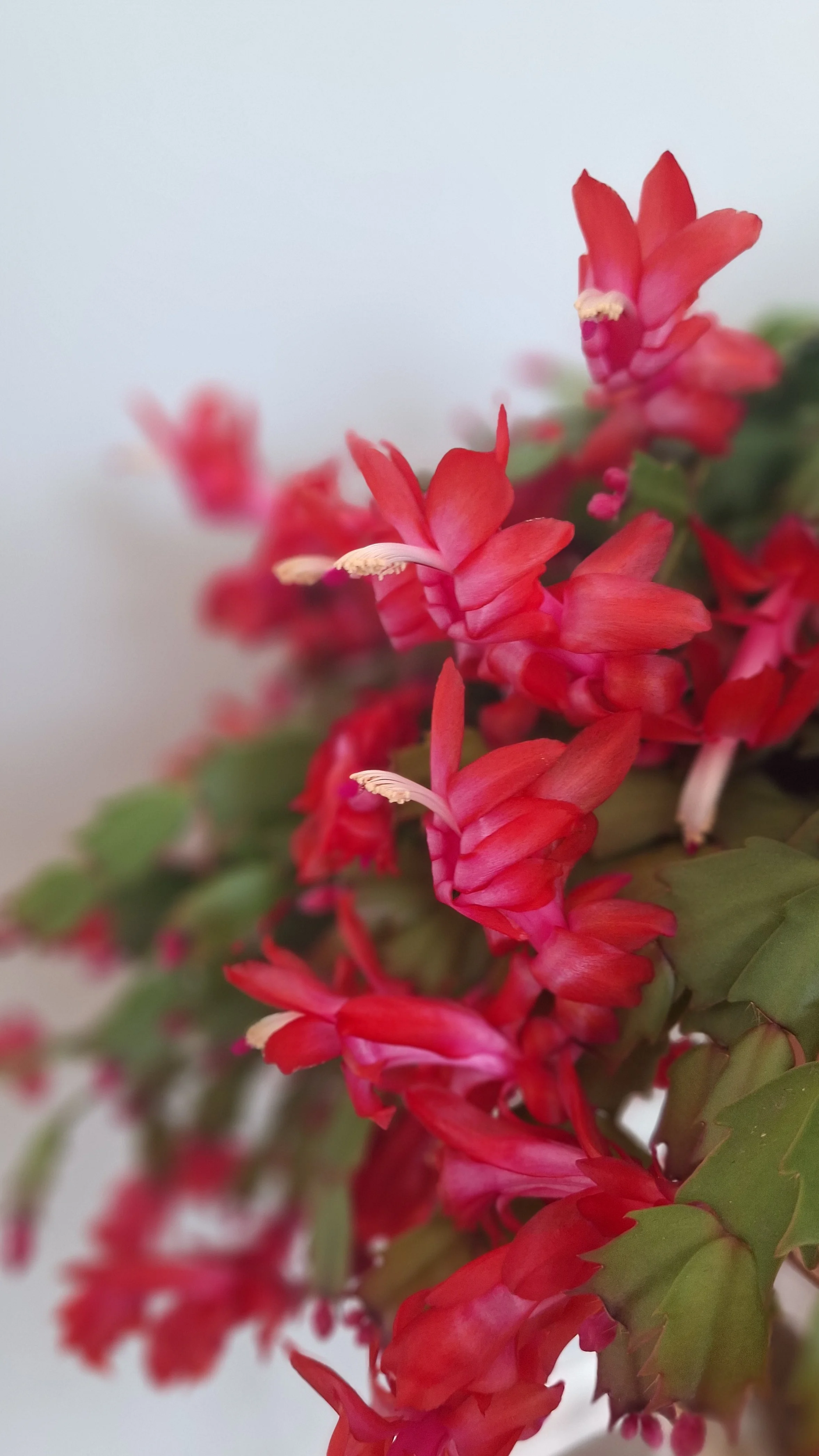Plant Profile: Christmas Cactus
Ah, the Christmas Cactus. This festive little wonder has been gracing homes during the holiday season for generations, bringing a splash of color just when we need it most. With its vibrant blooms and forgiving nature (mostly), it’s no wonder this plant is a favorite among beginner and seasoned gardeners alike. If you’ve ever looked at a Christmas Cactus and thought, “Isn’t that just a regular cactus dressed up for Christmas?”—well, buckle up. There’s more to this plant than meets the eye.
Let’s dive into everything you need to know about growing, caring for, and troubleshooting your Christmas Cactus, all while keeping your sanity intact.
Meet the Christmas Cactus
The Christmas Cactus, or Schlumbergera bridgessii if you want to sound fancy, isn’t your average cactus. Native to the tropical rainforests of Brazil, this beauty thrives in shaded, humid conditions—basically, the opposite of what you’d expect from a cactus. Its flat, segmented leaves and brightly colored blooms make it a standout during the holiday season. Unlike its spiky desert cousins, this cactus is more like the soft-spoken relative who shows up to the family party with homemade cookies.
How to Plant Your Christmas Cactus
So, you’ve got a Christmas Cactus. Great choice! Here’s how to give it the best start in life:
1. Choose the Right Pot
This isn’t the time to grab that massive planter you’ve been holding onto for no reason. Christmas Cacti prefer snug quarters, so opt for a pot that’s just a little larger than the root ball. Make sure it has drainage holes—this plant hates soggy feet.
2. Pick the Perfect Soil
Forget the sandy stuff your regular cactus loves. Christmas Cacti thrive in a well-draining potting mix with a bit of organic matter. A mix designed for succulents works well, but you can add a little peat moss or compost for extra oomph.
3. Location, Location, Location
Place your cactus in bright, indirect light. A sunny windowsill with a sheer curtain is perfect. Too much direct sunlight will scorch the leaves faster than you can say “Merry Christmas.”
How to Care for Your Christmas Cactus
Once it’s planted, your Christmas Cactus isn’t particularly high-maintenance, but it does have a few quirks. Here’s how to keep it happy:
1. Water Wisely
Christmas Cacti are NOT drought-tolerant. (I know, shocking.) Keep the soil evenly moist but not waterlogged. Let the top inch of soil dry out before watering again. Overwatering is the fastest way to make your plant regret ever coming home with you.
2. Humidity is Key
Remember, this isn’t a desert cactus—it’s a rainforest cactus. If your home is dry (looking at you, winter heating), consider placing a tray of water near the plant or misting it occasionally.
3. Feed Me, Seymour
During the growing season (spring through early fall), feed your cactus with a balanced liquid fertilizer every month. When buds start to form, switch to a high-phosphorus fertilizer to encourage blooming. Stop feeding altogether during the winter.
4. Temperature Drama
Christmas Cacti are pretty chill (pun intended) but prefer temperatures between 60-70°F. Keep it away from drafty windows, radiators, and overenthusiastic air conditioning units.
Getting Your Christmas Cactus to Bloom
The pièce de résistance of the Christmas Cactus is its stunning blooms, but they don’t just happen by accident. Here’s how to encourage your cactus to put on its holiday show:
Short Days, Long Nights: Starting in late September or early October, make sure your plant gets 12-14 hours of darkness each night. Move it to a dark room or cover it with a box if needed.
Cool It Down: Lower nighttime temperatures to around 50-60°F to trigger blooming.
No Stress, Please: Once buds start to form, avoid moving the plant or changing its environment drastically—Christmas Cacti are known divas and might drop their buds out of sheer spite.
Common Christmas Cactus Problems and How to Solve Them
Even the most well-loved plants can have their bad days. Here’s how to handle some common Christmas Cactus issues:
1. No Blooms?
If your cactus is refusing to bloom, it’s probably not getting enough darkness or cool temperatures. Follow the blooming tips above, and try to be patient (easier said than done, I know).
2. Yellow Leaves?
Yellowing leaves are usually a sign of overwatering. Check the soil—if it’s soggy, let it dry out before watering again. Also, make sure your pot has proper drainage.
3. Dropping Buds or Leaves?
This could be caused by stress from moving the plant, inconsistent watering, or sudden temperature changes. Keep conditions stable, and your cactus will eventually forgive you.
4. Pests? Seriously?
Christmas Cacti are relatively pest-resistant, but they’re not immune. If you spot mealybugs, spider mites, or scale, wipe the plant down with a cotton swab dipped in rubbing alcohol and give it a good rinse.
Why You Should Grow a Christmas Cactus
Aside from being ridiculously pretty, Christmas Cacti are a great way to bring a little life and greenery into your home during the colder months. They’re relatively easy to care for, bloom reliably when given the right conditions, and can live for decades. Seriously, there are people out there with Christmas Cacti older than their kids.
Plus, they make excellent gifts—whether you’re passing along a cutting or gifting a full-grown plant, it’s a thoughtful way to share a little joy (and responsibility) during the holidays.
Final Thoughts
The Christmas Cactus might not be as flashy as a poinsettia or as iconic as a fir tree, but it’s a holiday hero in its own right. With its cheerful blooms, easygoing nature (mostly), and surprising longevity, this plant deserves a spot on your windowsill—or as a centerpiece for your holiday table.
So, go ahead and embrace the magic of the Christmas Cactus. Your NC garden (or should I say living room?) will thank you, and you might just find yourself with a new favorite holiday tradition.



